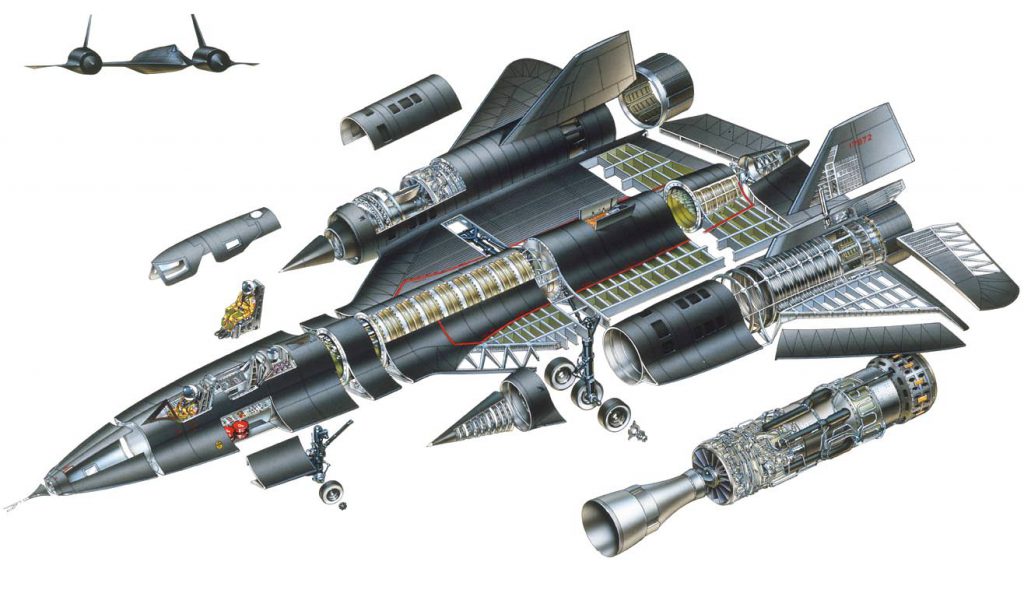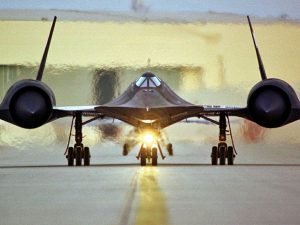Lockheed Martin SR-71 Blackbird
There is arguably no aircraft that has captured the imagination of the public quite like the SR-71 Blackbird. The Blackbird has been out of commission for awhile, but there’s not one person at an air show that wouldn’t give something special to see one fly low to the ground overhead. There’s a reason for this: the SR-71, in many respects, has yet to be beaten in many of the records it has broken, and it was built in a time when America was breaking barrier after barrier in terms of scientific endeavors.
Records
Believe it or not, the SR-71 Blackbird was first built by Lockheed-Martin in the early 1960s. This is an old bird, but that hasn’t stopped her from crashing multiple records for speed. It was such a fast, high-flying aircraft that even NASA wanted to take the Blackbird on to do testing of their own. With a service ceiling of 85,000 feet, it could push up to the envelope of where the atmosphere ends and space begins.
Communication
It’s biggest limitation – the thing that brought it out of retirement the first time – was the lack of a datalink. Sure, the SR-71 could cruise at just over Mach 3 in the upper stratosphere, but it couldn’t transmit any of its information back down to the ground. More inferior craft, like Lockheed’s U-2, had similar capabilities in terms of altitude but lacked any of the finesse and agility of the Blackbird. The U-2 had a downlink, though. And that’s why the U-2 is still in service and the Blackbird, for lack of a better term, isn’t.

Ultimately, military aircraft have to serve a purpose. There is a specific role that a commander needs of an aircraft, and if it fits the bill and does the job – it’s hired. While no one wants to downplay the significant role that the Blackbird has played in science, communication, and culture, it’s undeniable that once it outlived its usefulness to commanders, the SR-71 was just waiting to get plucked.

Retirement
It did get a call back after it went into retirement the first time, though. A major change in thinking took place around the late 90s, when military commanders realized they needed constant eyes in the sky at all times. Persistent surveillance wasn’t just a tactical mission requirement – it was of strategic importance. For that, you need high-flying aircraft capable of high altitude reconnaissance and a proven record of delivery.
Replacement
The SR-71 Blackbird rises from the ashes in 1998 with its first flown mission in almost a decade over the war-torn landscape of Serbia. High above the conflagration below, the SR-71 helped extend and support existing Intelligence, Surveillance, and Reconnaissance platforms that either did not exceed the SR-71’s flying abilities or couldn’t match it. However, it was a short-lived return. Technology was rapidly catching up and unmanned aerial aircraft like the RQ-4 Global Hawk and the Reaper were starting to hit the air. Requiring no pilot to risk his life, they offered the sort of persistent surveillance that battlefield commanders craved and strategic planners required.

Legacy
Those SR-71 Blackbirds that were still able to be moved, were moved to historic museums where they stand as a testament to the watermark for high-flying piloted performance. The design and features in the Blackbird would go on to influence future aircraft design – including elements used in the F-35 Joint Strike Fighter and nearly every stealth aircraft produced since. If you do get a chance to see one live, marvel at the ingenuity and what mankind was capable of making back in the 1960s.
Check out these stunning images of the SR-71 Blackbird.

